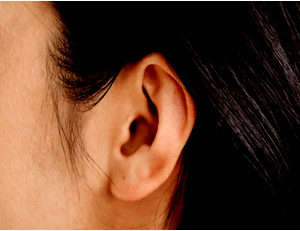ASSESSMENT OF THE PRESENT BACTERIOLOGICAL PROFILE AND ANTIBIOTIC SENSITIVITY PATTERN IN CHRONIC SUPPURATIVE OTITIS MEDIA IN SANA’A, YEMEN
Keywords:
Antibiotic sensitivity, bacteriological profile, chronic suppurative otitis media, CSOM, Sana’a, YemenAbstract
Background and objectives: The drainage of pus from the ear through a ruptured tympanic membrane that lasts longer than 12 weeks is known as chronic suppurative otitis media (CSOM). The purpose of the study was to ascertain the microbiological profile of middle ear chronic inflammation (CSOM) and the isolates' susceptibility to locally accessible antibiotics.
Subjects and methods: Total 111 ear swab samples from patients with clinically confirmed active CSOM were used in this cross-sectional investigation. Following a standard protocol, ear swabs were cultured to identify microbes. A modified Kirby-Bauer disk diffusion method was used to test antibiotic susceptibility, and the Clinical Laboratory Standards Institute's guidelines were followed to determine the diameter of the zone of inhibition.
Results: During two years, 111 patients with chronic suppurative otitis media were collected from January 2020 to the end of December 2022. Most of the patients were males (63.96%) while females were 36.04%. 36.04% of the total patients were in the ≤10-year group, and 29.7% were in the ≥46-year group while the other age groups were less frequent. Microbial growth was seen in 91.9% of samples, but 7.2% of samples did not. Among the samples with growth, 71.2% were monomicrobial, 12.6% were polymicrobial, and 9% had mixed growth with more than three microorganisms. The most frequently isolated bacteria were Pseudomonas aeruginosa (34.95%) followed by Staphylococcus aureus (14.6%) and Klebsiella spp. (9.8%). The antibiotics most sensitive against P. aeruginosa were cefepime (97.7%), meropenem (95.3%), piperacillin-tazobactam (95.3%), and ciprofloxacin (93%). Staphylococcus aureus showed the highest sensitivity to rifampin (100%) and fusidic acid (88.9%).
Conclusion: In the bacteriological profile of CSOM, P. aeruginosa, S aureus, Klebsiella spp., and Acinetobacter spp. are highly prevalent. The distribution of CSOM varies depending on the age group. The antibiotic susceptibility pattern of the bacterial isolates decreased. It is critical to review antibiotic prescriptions based on susceptibility and to be informed of the current trend in bacteriological profiles.

Peer Review History:
Received: 7 August 2023; Revised: 9 September; Accepted: 26 October; Available online: 15 November 2023
Academic Editor: Dr. Iman Muhammad Higazy , National Research Center, Egypt, imane.higazy@hotmail.com
, National Research Center, Egypt, imane.higazy@hotmail.com
Reviewers:
 Dr. Tamer Elhabibi, Suez Canal University, Egypt, tamer_hassan@pharm.suez.edu.eg
Dr. Tamer Elhabibi, Suez Canal University, Egypt, tamer_hassan@pharm.suez.edu.eg
 Dr. Bilge Ahsen KARA, Ankara Gazi Mustafa Kemal Hospital, Turkey, ahsndkyc@gmail.com
Dr. Bilge Ahsen KARA, Ankara Gazi Mustafa Kemal Hospital, Turkey, ahsndkyc@gmail.com
 Dr. Wadhah Hassan Ali Edrees, Hajja University, Yemen, edress2020@gmail.com
Dr. Wadhah Hassan Ali Edrees, Hajja University, Yemen, edress2020@gmail.com
Downloads

Published
How to Cite
Issue
Section

This work is licensed under a Creative Commons Attribution-NonCommercial 4.0 International License.









 .
.